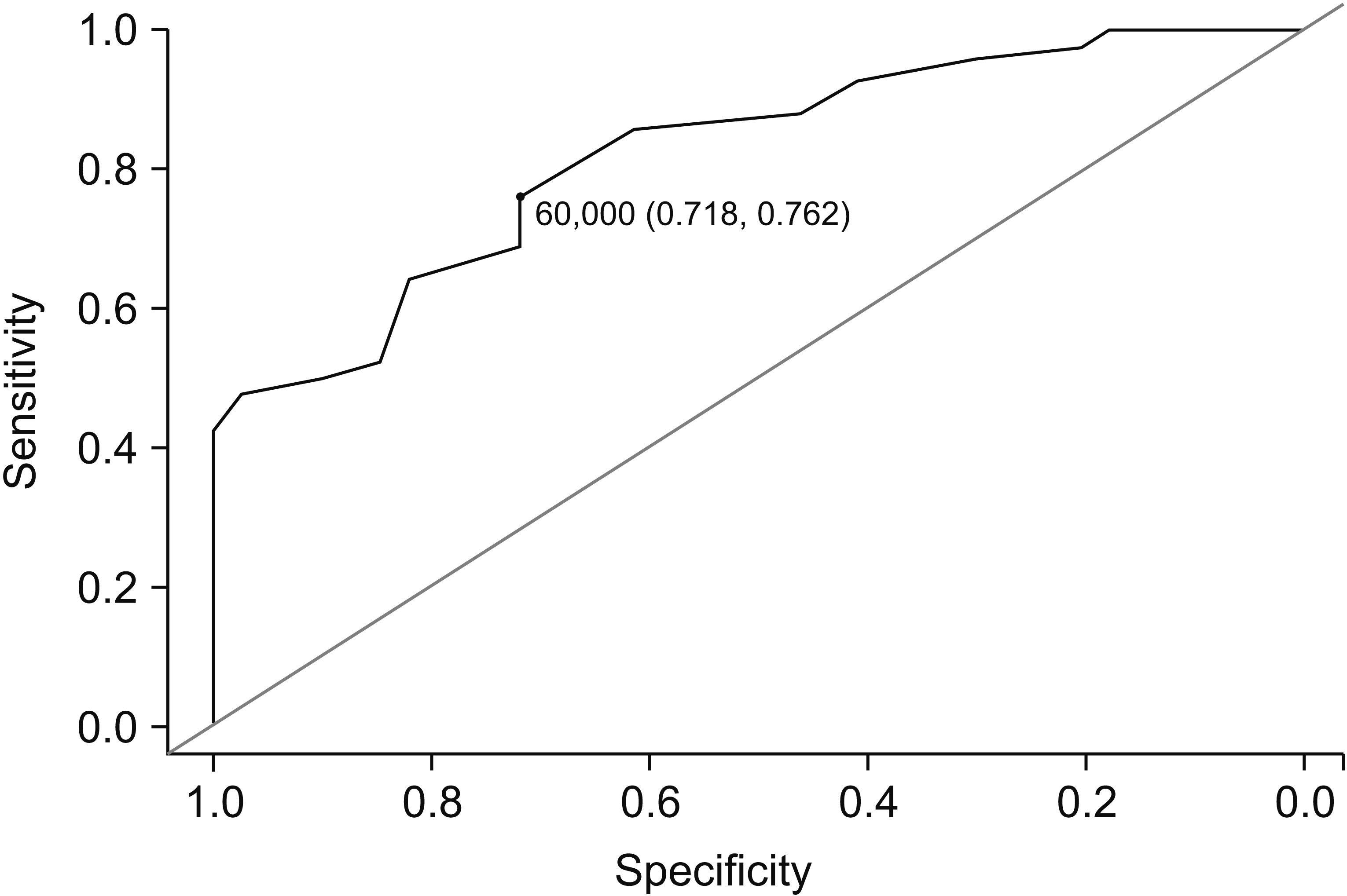Ann Rehabil Med.
2018 Jun;42(3):477-482. 10.5535/arm.2018.42.3.477.
Factors Associated With Discharge Destination in Advanced Cancer Patients With Bone Metastasis in a Japanese Hospital
- Affiliations
-
- 1Department of Orthopaedic Surgery, Graduate School of Medical Sciences, Kanazawa University, Kanazawa, Japan. khayashi830@gmail.com
- 2Section of Physical and Rehabilitation Medicine, Central Medical Facilities, Kanazawa University Hospital, Kanazawa, Japan.
- KMID: 2417841
- DOI: http://doi.org/10.5535/arm.2018.42.3.477
Abstract
OBJECTIVE
To analyze patient characteristics of cancer rehabilitation and outcomes at our hospital.
METHODS
This retrospective study analyzed 580 patients, who underwent cancer rehabilitation at our hospital and rehabilitation outcome after therapy were investigated. The relationship between the initial Barthel index and discharge outcomes was investigated, with a special focus on cancer patients with bone metastasis. The Barthel index and performance status (Eastern Cooperative Oncology Group) before and after rehabilitation were analyzed, and threshold value of home discharge was calculated from a receiver operating characteristic curve (ROC). General criteria for home discharge from our hospital included independence in performing basic activities of daily living such as bathing, feeding, and toileting or availability of home support from a family member/caregiver.
RESULTS
The outcomes after rehabilitation among all the patients were as follows: discharge home 59%, death 13%, and others 27%. Statistical differences were observed between the initial and final values of the Barthel index in patients with bone metastasis, who could be discharged home (p=0.012). ROC analysis of the initial Barthel index for predicting home discharge revealed a threshold value of 60, sensitivity of 0.76, and specificity of 0.72.
CONCLUSION
The patients with bone metastasis had a lower rate of home discharge and a higher rate of mortality than all the study patients who underwent cancer rehabilitation at our hospital. It is proposed that at the time of initiation of rehabilitation for patients with bone metastasis, an initial Barthel index lower than 60 might predict a worse outcome than home discharge.
Keyword
MeSH Terms
Figure
Reference
-
1. Bunting RW, Shea B. Bone metastasis and rehabilitation. Cancer. 2001; 92(4 Suppl):1020–8.
Article2. Lehmann JF, DeLisa JA, Warren CG, deLateur BJ, Bryant PL, Nicholson CG. Cancer rehabilitation: assessment of need, development, and evaluation of a model of care. Arch Phys Med Rehabil. 1978; 59:410–9.3. Harvey RF, Jellinek HM, Habeck RV. Cancer rehabilitation: an analysis of 36 program approaches. JAMA. 1982; 247:2127–31.
Article4. Dietz JH. Rehabilitation of the cancer patient. Med Clin North Am. 1969; 53:607–24.5. Miyashita M, Arai K, Yamada Y, Owada M, Sasahara T, Kawa M, et al. Discharge from a palliative care unit: prevalence and related factors from a retrospective study in Japan. J Palliat Med. 2009; 12:142–9.
Article6. Okamura H. Importance of rehabilitation in cancer treatment and palliative medicine. Jpn J Clin Oncol. 2011; 41:733–8.
Article7. Kanda Y. Investigation of the freely available easy-touse software ‘EZR’ for medical statistics. Bone Marrow Transplant. 2013; 48:452–8.
Article8. Hasegawa T, Goto N, Matsumoto N, Sasaki Y, Ishiguro T, Kuzuya N, et al. Prevalence of unmet needs and correlated factors in advanced-stage cancer patients receiving rehabilitation. Support Care Cancer. 2016; 24:4761–7.
Article9. Mirels H. Metastatic disease in long bones: a proposed scoring system for diagnosing impending pathologic fractures. Clin Orthop Relat Res. 1989; ((249)):256–64.
Article10. Ruff RL, Ruff SS, Wang X. Persistent benefits of rehabilitation on pain and life quality for nonambulatory patients with spinal epidural metastasis. J Rehabil Res Dev. 2007; 44:271–8.
Article11. Cormie P, Newton RU, Spry N, Joseph D, Taaffe DR, Galvao DA. Safety and efficacy of resistance exercise in prostate cancer patients with bone metastases. Prostate Cancer Prostatic Dis. 2013; 16:328–35.
Article12. Fortin CD, Voth J, Jaglal SB, Craven BC. Inpatient rehabilitation outcomes in patients with malignant spinal cord compression compared to other non-traumatic spinal cord injury: a population based study. J Spinal Cord Med. 2015; 38:754–64.
Article13. Mees M, Klein J, Yperzeele L, Vanacker P, Cras P. Predicting discharge destination after stroke: a systematic review. Clin Neurol Neurosurg. 2016; 142:15–21.
Article
- Full Text Links
- Actions
-
Cited
- CITED
-
- Close
- Share
- Similar articles
-
- Factors Affecting the Discharge Destination of Patients With Spinal Bone Metastases
- Comparison of Nodal Staging, of UICC TNM and Japanese Classification, and Prognostic Nodal Grouping of UICC N3M0 in Advanced Gastric Cancer
- The Discharge Destination of Rehabilitation Inpatients in a Tertiary Hospital
- Recurrent ovarian cancer metastatic to the bone: Case report
- Two Cases of Histopathologically Advanced (Stage IV)Early Gastric Cancer


